|
|
Instructions
|
|
|
|
Running Othello
|
|
|
|
On the right of the screen you will find the control panel, shown in figure 0.
|
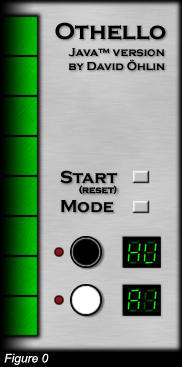
|
|
|
With the Mode-button, you can choose who will control the two players.
Next to the two chips are two displays, showing either HU - human controls player - or AI - computer controls player.
All combinations are possible.
Remember that black always begins.
|
|
|
The Start/reset-button will start the game if it is not running.
During gameplay, the Start/reset-button will break termination, and return to start-up-mode.
This is also the case, when the game has finished.
|
|
|
During gameplay, the LEDs keep track of how many black and white chips are on the gameboard.
The diodes to the left of the chips implicate whose turn it is.
|
|
|
When the game is over, the diode next to the winner will start blinking.
If there was a draw, both diodes will blink.
|
|
|
How to play Othello
|
|
1
|
The board is initiated as shown in figure 1.
|
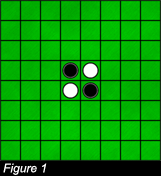
|
2
|
The players take turns in placing one chip at the time in one of the empty squares of the gameboard.
Black begins.
|
3
|
Every chip placed on the board has to flip at least one of the opponent's chips.
A chip is flipped if it is trapped between the chip that was just placed and another chip of the opponent's color.
In figure 2, if white places a chip in square A, the result will be that of figure 3.
|
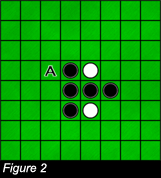
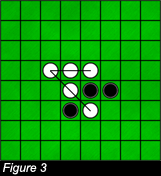
|
4
|
The number of flipped chips in one turn is only limited by the size of the gameboard.
If in figure 4, white decides to place his/her chip in square A, the result will be that of figure 5.
|
5
|
If one player cannot place a chip (under the requirements of point 3),
he/she has to pass and let the opponent make his/her move.
|
6
|
The game ends when neither player can place a chip on the board.
Especially, this is the case if the gameboard is filled,
or all chips are of the same color.
He/she wins, who has the most chips of his/her color on the gameboard.
|
|
|
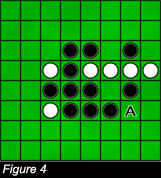
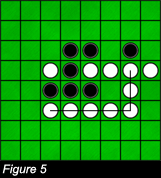
|






